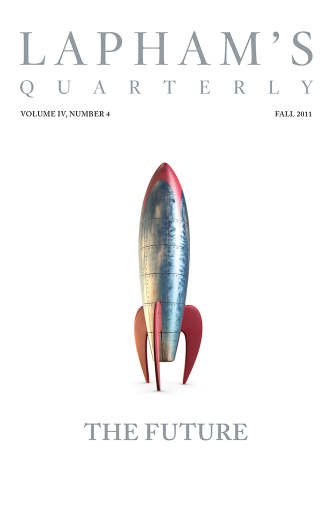Make a wheel of light wood, and in its circumference, put hollow spokes all having bores of the same diameter.
Let them be placed at equal distances from one another, and let them also be placed at an angle somewhat verging from the perpendicular. Then half fill these hollow spokes with mercury. The wheel thus filled will, when placed on an axis supported by two posts, revolve of itself. Or scoop out a canal in the tire of the wheel, plaster leaves of the tala tree over this canal with wax, fill one half of this canal with water and the other half with mercury till the water begins to come out, and then cork up the orifice left open for filling the wheel. It will then revolve of itself, drawn around by the water. Now attach to the rim of the wheel a number of water pots, and place the wheel and these pots like the waterwheel, so that the water from the lower end of the tube flowing into them on one side shall set the wheel in motion, impelled by the additional weight of the pots thus filled. The water discharged from the pots as they reach the bottom of the revolving wheel should be drawn off into the reservoir before alluded to by means of a watercourse or pipe. The self-revolving machine that has a tube with its lower end open is a vulgar machine on account of its being dependent, because that which manifests an ingenious and not a rustic contrivance is said to be a machine. And, moreover, many self-revolving machines are to be met with, but their motion is procured by a trick. They are not connected with the subject under discussion. I have been induced to mention the construction of these merely because they have been mentioned by former astronomers.
From the Crest Jewel of Treatises. Born in Bijapur in 1114, Bhaskara II succeeded the astronomer Brahmagupta as head of the observatory of Ujjain, the leading mathematical center of ancient India, and wrote the first work to systematically use the decimal system. “In India,” wrote historian Lynn White Jr. of this oldest-known description of a perpetual-motion machine, “such an idea was consonant with, and was probably rooted in, the Hindu belief in the cyclical and self-renewing nature of all things.”
Back to Issue

